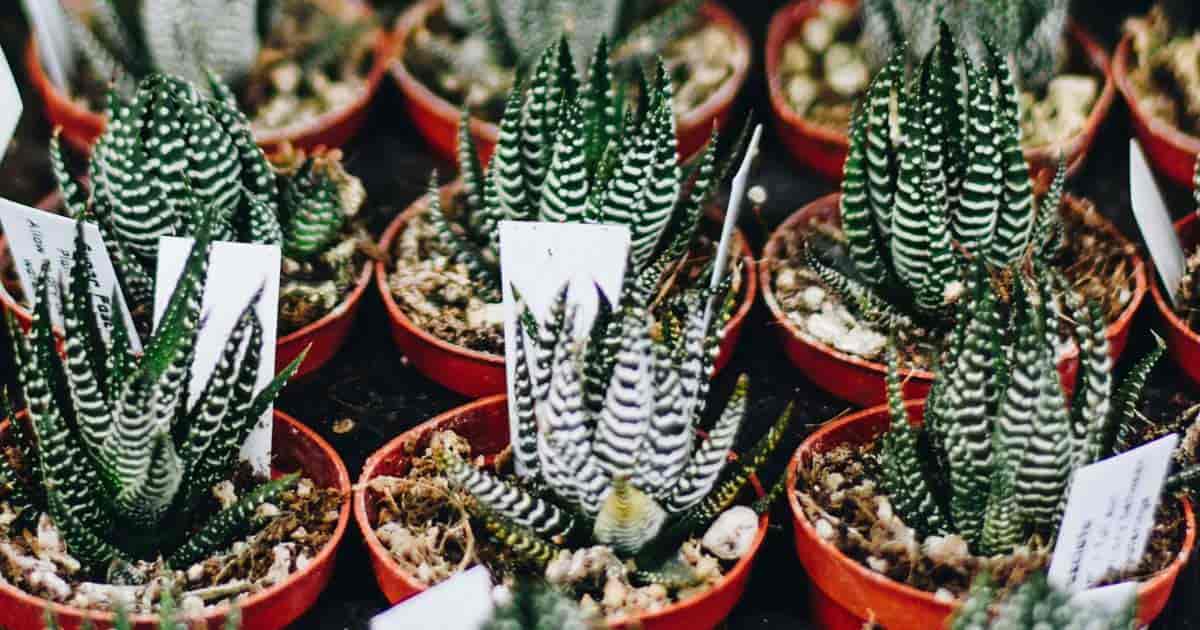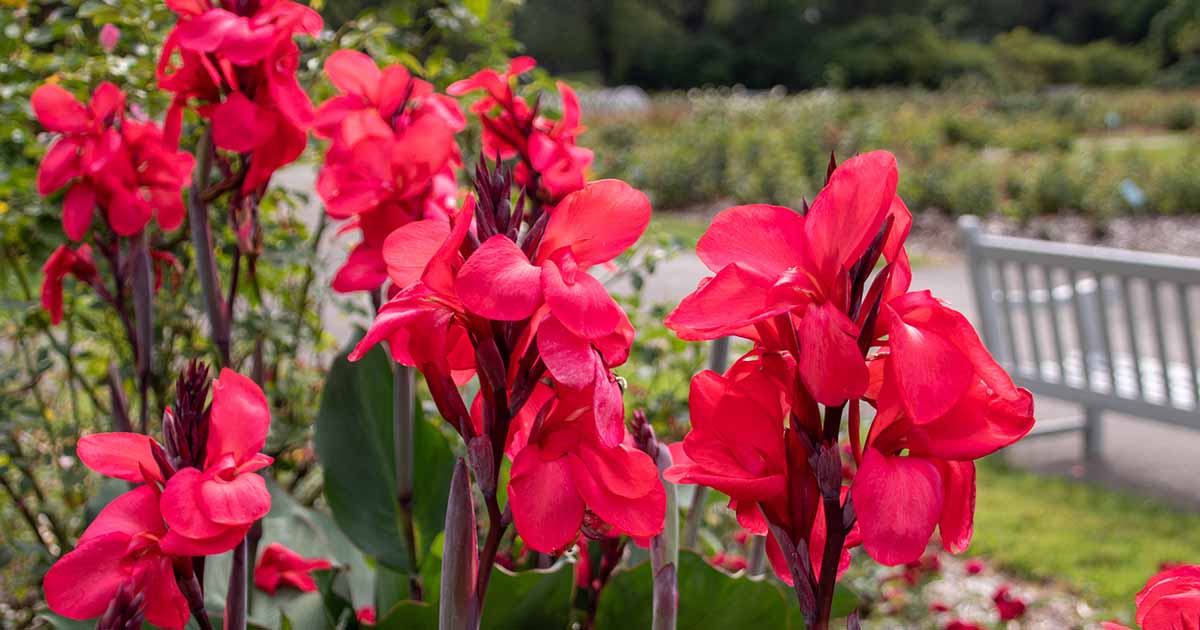Haworthia fasciata (haw-WORTH-ee-uh fass-ee-AY-tuh), now named Haworthiopsis fasciata, is a succulent plant native to South Africa shrub lands.
Haworthia plants are often compared to Ox Tongue plants (Gasteria) and sometimes even confused with Aloe plants. However, it is not surprising, like Aloes, Haworthia fasciata belongs to the Asphodeloideae family and the genus Haworthia.

These plants have thick, dark green leaves with horizontal zebra stripes of white tubercles, warts, or white bumps on the outer surface of the thick leaves.
Owing to this distinctive and beautiful foliage, these plants earned the common names:
- Zebra plant
- Zebra cactus
- Zebra Haworthia
The inside of the leaves is plain and smooth. Like most other succulents, Haworthias are low maintenance.
Haworthiopsis fasciata plants are drought tolerant, storing water in their thick, stiff leaves.
Cultivation and Haworthia Fasciata Care
Haworthiopsis Fasciata Growth and Size
The zebra plant is a relatively small plant. It grows in a rosette that can reach around 5″ – 8” inches in height.
Zebra plants have thick, pointy, triangular-shaped, dark green leaves with horizontal white stripes.
Generally, the growing season begins in the spring through the fall and is considered one of the slower-growing species. However, its leaves tend to curve inward, and its growth habit is taller.
The green triangular leaves are clustered together, giving the plant a “Zebra” effect.
NOTE: Haworthia attenuata has a similar appearance.
Flowering and Fragrance
Haworthiopsis Fasciata is a flowering plant producing white flowers, usually during the spring.
Some plants also bloom during the summer months.
Well-grown zebra plants produce inflorescence (long stems) during the flowering season.
These stems bear tiny striped green and white haworthia flower in color with no fragrance.
Keep in mind zebra fasciata cactus can experience a hard time breaking out into full bloom when it is grown indoors.
Light, Shade, and Temperature
Zebra plant succulent enjoys locations receiving a lot of bright indirect sunlight but no direct sun exposure. Too much sun can cause leaves to turn white.
However, little zebra plants also appreciate some light shade in the heat of the afternoon. The leaves may change color in bright, direct sunlight.
They do well in medium to high light. Therefore, when grown as a houseplant, keeping them near east or south windows that receive loads of natural light is generally advisable.
For gardeners, they are easy to grow, preferring a well-draining soil mix. While the plant is somewhat tolerant of low-light conditions, it prefers full sun or bright direct light, which also produces the best colors in the leaves.
During the summer, the ideal room temperatures for Haworthia fasciata range from 60° to 85° degrees Fahrenheit. They will tolerate high heat levels.
As the temperature drops, it is important to make sure that the temperature does not drop below 50° degrees Fahrenheit to ensure plant health.
The zone 10 plants are not cold-hardy and do not like cold temperatures.
Watering and Feeding
Haworthiopsis fasciata care includes proper watering and feeding. Water in moderation.
During the summer, water the plant thoroughly, allowing the soil to dry out between watering sessions. Be careful to avoid overwatering and root rot.
If the leaves are brown or yellow and mushy, or the center of the plant is turning brown, that is a sign of overwatering. Hold off on watering your plant for several weeks.
As these plants can store moisture in their leaves, reduce watering as the temperature starts to drop and allow the soil at the top to dry out.
When zebra cactus is grown in a terrarium, only use fertilizer once every 4 – 6 months.
Otherwise, applying diluted liquid fertilizer every 2 – 3 months is enough to provide these plants with the nutrients for proper health and growth.
There is no need to fertilize the zebra plant succulent during winter. Keep humidity low, around 10% or lower, at all times.
Related: Tips On Haworthia Watering
Porous Soil & Transplanting
Zebra fasciata grows best in a cactus potting mix with excellent drainage.
A mixture of equal part perlite, potting soil, and part sand is also a viable alternative.
When plants outgrow their pot, transplant during the spring season.
It is advisable to move the succulent Haworthia to only a slightly bigger pot.
Generally, these plants need to be repotted every two years into a new cactus mix.
Grooming and Maintenance
Once the haworthiopsis fasciata flower fades, groom by cutting off the flower stems.
Leaf cuttings take longer to produce new plants, but they’re fascinating to watch! Start by removing an entire leaf from a mature plant.
Using a sharp, clean knife, cut off the stem an inch below where the leaves begin to space out. Remove all the leaves from that bottom inch, leaving you with a spiky rosette on a stem.
Popular Haworthia Succulents To Grow and Collect
How to Propagate Zebra Fasciata Cactus
Succulent zebra plants propagate easily – the same as Aloe plants.
Take cuttings from the clump-forming mother plant, no longer than just a couple of inches long.
Let them dry for a few days, allowing the wound to heal, before planting.
Haworthia plants also produce pups or offsets from the parent plant. Simply remove the baby plants from the parent and replant them in their own individual pots.
Irrespective of the propagation method, make sure not to overwater the plant.
Water sparingly and allow the soil to dry afterward.
Zebra Fasciata Pest or Diseases
The most common problem encountered by the zebra plant succulent is scale insects, mealybugs, and, at times, spider mites.
These scale bugs stick to the leaves and suck the juice out of the plant’s leaves, robbing the plant of the essential nutrients.
If the plant is attacked, the easiest way to handle this problem is to spray the affected plant using a good-quality pesticide.
Related: Learn how to control problems with succulent diseases and pests
Uses For Fasciata Zebra Plant
Haworthia plants make excellent additions to desert dish-gardens.
Display these window sill succulents in small pots. It is another way to appreciate the beautiful foliage of this extraordinary plant.
Haworthias are non-toxic, making them excellent starter plants for kids.












